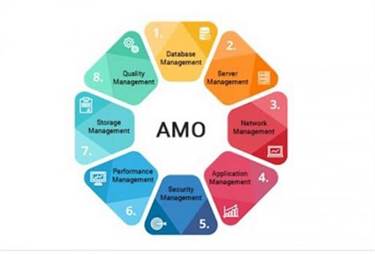Items like network endpoints might differ between your environments, but parameterization of this type of variable data can help make sure that the code is consistent and that the environmental differences are well-defined. CI/CD tasks would normally be triggered whenever changes are introduced in code, but unnecessary processes will slow down progress and strain resources like CPUs and developer hours. To solve this problem, developers can break down software into smaller code packages so that pipelines run faster. If metrics show it’s taking too long to load an image and users don’t wait for it to load, developers can improve load times. In every case, continuous delivery creates the feedback loop needed to measure and improve user experience. The feedback loop helps measure metrics like business revenue, user conversion rates, and engagement time.
Enabling automation into your CM solution will keep your CI/CD pipelines flowing smoothly and efficiently. You’ll be able to deploy your code faster and with the confidence that your services are monitored, allowing your engineers to quickly resolve any incidents that arise over time. However, the responsibility for ensuring new applications and services are monitored properly should be delegated to developers.
Deployment agility
Large notifications backlogs, alerting rules based on simple thresholds, stale check configuration and architecture were commonly considered standard. For later stages especially, reproducing the production environment as closely as possible in the testing environments helps ensure that the tests accurately reflect how the change would behave in production. Significant differences between staging and production can allow problematic changes to be released that were never observed to be faulty in testing. The more differences between your live environment and the testing environment, the less your tests will measure how the code will perform when released. Treating code review as a best practice improves code quality, encourages collaboration, and helps even the most experienced developers make better commits.
- See how the mabl team adapted our existing functional API test architecture for API load testing in our low-code test automation platform.
- Once you add these annotations, Prometheus should auto-discover these services and metrics will start showing up.
- To learn more about general CI/CD practices and how to set up various CI/CD services, check out other articles with the CI/CD tag.
- Continuous Integration (CI) is a development practice that requires developers to integrate code into a shared repository several times a day.
- A human—your operations, security, or compliance team—still needs to manually sign off before final release, adding more delays.
- When you have a large number of synthetic tests to run, keeping track of them all and executing them effectively becomes a challenge.
Processes are intertwined, and feedback loops are constant, so bugs are detected faster. Here, you can read more about DevOps CI/CD tools that can be helpful for your experts. A CI/CD pipeline works when the output of one stage triggers the next to start. When all tests are passed, then the project is pushed to DEPLOYMENT (stage 3). In some cases, a pipeline could fork and work in parallel, delivering various artifacts and reports as rapidly as possible.
Why CI/CD Security Is Critical
Take the necessary measures to ensure optimum security of your CI/CD system. Start each workflow from the same isolated environment and ensure consistency between projects. A standard CI/CD setup runs different tests in parallel to reduce testing time. For example, there is no sense in running time-consuming UI tests if a basic unit test failed previously.

I’m certain there are still opportunities for improvement and ideas for new rules or features that can be added to make this solution even better and more robust. These integration artifacts are built in a way that requires you to replace only a few configuration parameters specific to your environment and organization/project, leaving the rest unchanged. Furthermore, you can use these integration artifacts as a starting point for further customization tailored to the needs of your organization or project.
Continuous monitoring and observability in CI/CD
Homogeneous environments might be hard to achieve in big organizations, but the idea is to use the same tooling, process, and configurations in all the environments. In CD, production is not a special environment; it’s just another stage in the pipeline. Continuous Delivery is the ability to get changes of all types—including new features, configuration changes, bug fixes and experiments—into production, or into the hands of users, safely and quickly in a sustainable way.

In general, the head of your DevOps team is the one in charge of ensuring that the pipeline is working properly. Understand what end users expect from products, since this dictates how software development teams will be aligned to enable these capabilities. A software solution may have many features, but some of them—or even just one of them—may be most critical to customers.
Synthetic Monitoring for CI/CD Pipelines
Improper artifact integrity validation involves insufficient checks to ensure the integrity and authenticity of software artifacts within the CI/CD pipeline. Without proper validation mechanisms, attackers can manipulate or replace artifacts, leading to the deployment of compromised or malicious software. Understanding the threats that can exploit vulnerabilities — from insufficient flow control mechanisms to improper artifact integrity — informs the development of robust strategies to mitigate them. By preparing for the OWASP Top 10 CI/CD security risks, you can enhance your pipeline’s security posture. Don’t make 10 different builds in the same day if there is no practical way to test and deploy those 10 builds in the same day. Teams and project effort must reflect the most effective use of the pipeline.

Software development teams need solid, tested processes for CI/CD, as well as testing solutions that meet the needs of the codebase. Also, teams need automation to deploy solutions so that they can eliminate the need for time-consuming manual deployment. The CD refers to continuous delivery or continuous deployment, depending on how the team chooses to push code changes to production. Continuous Integration and Continuous application performance monitoring ci cd Delivery have become an integral part of most software development lifecycles. With continuous development, testing, and deployment, CI/CD has enabled faster, more flexible development without increasing the workload of development, quality assurance, or the operations teams. While you can do continuous integration without continuous delivery or deployment, you can’t really do CD without already having CI in place.
Monitoring and observability
Build frequency can be daily or even several times per day at some points in the project’s lifecycle. These small, frequent builds enable easy and low-risk experimentation, as well as the ability to easily roll back or abandon undesirable outcomes. The CI/CD process is important because it makes deploying processes easier and more predictable.
Most modern developer tools, such as VS Code, even SAP BAS, etc. now come equipped with native Git integration. However, SAP Cloud Integration differs significantly from other development tools, and as a result, implementing a CI/CD solution for it presents unique challenges. Branching strategy impacts CI/CD pipeline design by influencing how code moves from development to production. Branching models like GitFlow, GitHub Flow, and trunk-based development bring distinct advantages and challenges. These complexities can escalate on large teams, leading to merge conflicts and stale branches. However, setting up a CI/CD pipeline requires careful planning, configuration, and coordination of tools and processes.
What is continuous testing?
As an extension of continuous delivery, which automates the release of a production-ready build to a code repository, continuous deployment automates releasing an app to production. Because there is no manual gate at the stage of the pipeline before production, continuous deployment relies heavily on well-designed test automation. Mabl is the leading intelligent, low-code test automation solution that enables high-velocity software teams to tightly integrate automated end-to-end tests into the entire development lifecycle. Mabl’s unified platform makes creating, executing, and maintaining reliable browser, API, and mobile web tests easier, accelerating the delivery of high-quality, business critical applications. CD depends on a central deployment pipeline in which the team automates the testing and deployment processes. This pipeline is an automated system that executes a progressive set of test suites against the build.
Enhancing your application security program with continuous monitoring – BleepingComputer
Enhancing your application security program with continuous monitoring.
Posted: Wed, 04 Oct 2023 07:00:00 GMT [source]